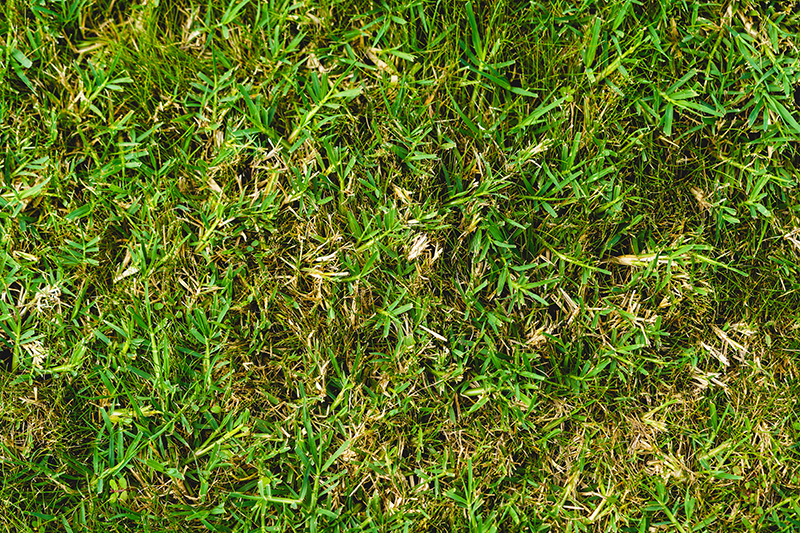
When the spring season arrives, birds start to chirp, the weather gets warmer, the days get longer and crabgrass emerges. Benjamin Franklin said, “… but in this world nothing can be said to be certain, except death and taxes.” Dr. Franklin would have included crabgrass in that quote if he knew about it, but it wasn’t introduced into the U.S. until the 1850s. This annual grassy weed once had hopes of becoming a useful forage crop. It failed in that noble goal, but did achieve overwhelming success as a top-five weed in lawns, landscapes, golf courses, sports fields, park and recreation sites, and in farm fields everywhere.
A botanical review from the University of Connecticut (Storrs, Conn.) in the 1970s suggested an optimum time to apply a preemergence herbicide for crabgrass control in turfgrass was when forsythia (Forsythia spp.) blooms withered or when dogwood (Cornus spp.) trees started to bloom. Thus, the flowering phase of those plants’ lifecycles is a biological indicator for crabgrass emergence. This is a classic example of phenology.
Phenology is the study of the timing of recurring biological events in plants, animals and insects, particularly in relation to seasonal changes and climate — for example, the time of year when cherry trees bloom, when a robin builds its nest and when leaves turn color in autumn. These biological events correlate with air and soil temperature, rain, day length and other conditions related to the local weather and regional climate. The USA National Phenology Network (https://www.usanpn.org) describes phenology as “nature’s calendar.”
Research was conducted in the Midwest to observe the flowering events of 11 ornamental species and compare lifecycle stages to the emergence of crabgrass. The overall goal was to determine which ornamental species was the best predictor to calculate the number of days between flower withering and two weeks prior to crabgrass emergence. The term “bloom withering” refers to the process of a flower, after its period of blooming, gradually fading, drying up and dropping its petals. The target of two weeks prior to crabgrass emergence was selected to provide turf managers with optimum timing to apply a preemergence herbicide.
To determine crabgrass emergence, researchers at Kansas State University (Manhattan) and the University of Nebraska (Lincoln) surveyed bare ground and thin turf areas for three consecutive spring seasons. Also at both locations, these ornamental shrubs and trees were evaluated for their flower withering: bridal wreath spiraea (Spiraea prunifolia), callery pear (Pyrus calleryana), daffodil (Narcissus spp.), flowering quince (Chaenomeles spp.), forsythia, iris (Iris spp.), lilac (Syringa vulgaris), redbud (Ceris canadensis), saucer magnolia (Magnolia × soulangiana), tulip (Tulipa spp.) and vanhoutee spiraea (Spriraea × vanhouttei). Flower withering date was recorded when flowers were no longer visibly obvious from a distance of about 30 feet (10 meters).
In Kansas, the earliest calendar date of crabgrass emergence in bare soil was April 15, and the latest was May 9; in thin turf, the earliest crabgrass emergence was May 5, and the latest was May 22. In Nebraska, the earliest crabgrass emergence in bare soil was June 1, and the latest was June 8; in thin turf, the earliest crabgrass emergence was June 10, and the latest was June 17. The variability in crabgrass emergence dates from year to year indicates that calendar date is not a reliable indicator for predicting crabgrass emergence or when to precisely apply a preemergence herbicide.
The ornamentals whose flower withering most consistently predicted that two-week window prior to crabgrass emergence in bare soil were the daffodil, callery pear and lilac, and in thin turf were the daffodil, redbud and lilac. For each ornamental species at each site, there were a specific number of days required. For example, in thin turf, after daffodil’s withering date, wait 35 days before applying a preemergence herbicide.
This research demonstrated that flower withering resulted in a better estimate to apply a preemergence herbicide for crabgrass control rather than relying on a routine calendar date or a “best guess.” In addition to phenology, today’s turf manager can also rely on air and soil temperatures to calculate growing degree days useful to predict crabgrass emergence and preemergence herbicide applications.
Source: Fry, J., S. Rodie, R. Gaussoin, S. Wiest, W. Upham and A. Zuk. 2001. Using flowering ornamentals to guide application of preemergence herbicides in the midwestern U.S. International Turfgrass Society Research Journal 9:1009-1012.
Mike Fidanza, Ph.D., is a professor of plant and soil science in the Division of Science, Berks Campus, at Pennsylvania State University in Reading, Pa. He is a 23-year member of GCSAA.